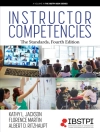Grounded in evidence-based research, Police in America, Third Edition provides a comprehensive and realistic introduction to modern-day policing in the United States. Written in a conversational tone and designed to be reader-friendly, this text helps students grasp best practices in everyday policing and encourages them to think critically about common misconceptions of police work. Author Steven G. Brandl draws from his experience with law enforcement to emphasize the positive aspects of policing while addressing its controversies and tackling topics centered on one pivotal question: ‘What is good policing?’ Discussions of discretion, police use of force, and tough ethical and moral dilemmas offer students a deeper look into the complex issues of policing, prompting them to think more broadly about its impact on society.
Table of Content
Part I: Foundations for The Study of The Police
Chapter 1: An Introduction to The Police in America
Police Spotlight: What It Takes to Be a Good Police Officer
Introduction
The Challenge of Policing a Free Society
Police Accountability in a Free Society
The Controversies and Difficulties of Policing
The Police Are Expected to Prevent and Solve Crime
Ethics and Morals in Policing
Chapter 2: The History of The Police in America
Police Spotlight: Policing in the Early Days According to The First One Hundred Years, a publication of the Milwaukee Police Department
Why Study the History of the Police?
Policing Colonial America
The First American Police Departments: The Political Era of Policing
Early 1900s to 1960s: The Reform Era of Policing
The 1970s to the Present: The Community Problem-Solving Era of Policing
Chapter 3: The Characteristics and Structure of Police Organizations
Police Spotlight: Police Salaries and the Possible Consequences
Characteristics of Police Organizations
The Challenges of Managing Police Organizations
The Structure of Police Departments
Major Operating Units in Police Departments
Types and Levels of Law Enforcement Agencies
Chapter 4: The Role of The Police
Police Spotlight: “Scoop and Run” in Philadelphia
Events of the Early 2020s and the Role of the Police
The Police Enforce the Law
The Police Control Crime
The Police Deal With Situations Where Force May Need To Be Used
The Police Respond to People in Need
The Police Handle Time-Pressing Situations
The Police Enforce the Law, Maintain Order, and Provide Services
Part II: Police Work
Chapter 5: Police Recruitment, Selection, And Training
Police Spotlight: “30 × 30 Initiative”
The Relationship Between Effective Policing and the Recruitment, Selection, and Training of Police Officers
The Recruitment of Police Officers
The Selection of Police Officers
Minimum Qualifications for Police Officers
Selection Procedures for Police Officers
The Outcomes of the Recruitment and Selection of Police Officers: Diversity
Police Officer Training
Chapter 6: Police Patrol
Police Spotlight: The Reemergence of Foot Patrol
Police Patrol and Call Priority
Managing Calls for Service
Preventive Patrol
Hot Spot Policing
Police Crackdowns
Police Stops of Citizens as a Strategy
One- and Two-Officer Squads
Foot Patrol
Offender-Focused Strategies
Chapter 7: Crime Detection and Investigation
Police Spotlight: Sources of Evidence in a Multiple-Homicide Investigation
Criminal Investigation Defined
Types of Criminal Investigations
How Are Crimes Solved?
Forms and Types of Evidence in Criminal Investigations
Chapter 8: Police Discretion and Its Control
Police Spotlight: Ethics, Policy, and Discretion
Discretion Defined
Factors That Influence the Discretion of Police Officers
How Is Police Discretion Best Controlled?
Chapter 9: The Law of Search, Seizure, And Self-Incrimination
Police Spotlight: Riley v. California (2014)
Basic Legal Terminology and Concepts
Arrest, Custody, Stops, and Encounters
The Law of Search and Seizure: The Fourth Amendment
The Search Warrant Requirement and Its Exceptions
The Exclusionary Rule
The Controversy of “No-Knock” Warrants
The Law of Self-Incrimination: The Fifth and Sixth Amendments
The Content and Waiver of Miranda Warnings
Part III: The Hazards of Police Work
Chapter 10: Health and Safety Issues in Police Work
Police Spotlight: Officer Wellness and Fitness Resources Available to Police Officers
What Is Stress and Why Is It Important?
Extraordinary Effects of Stress: Suicide and Early Death
What Can Mediate the Effects of Stress?
Physical Hazards of Police Work
So Is Police Work Dangerous?
Chapter 11: Police Use of Force
Police Spotlight: Reducing Police Use of Force Through De-escalation
Reasonable Force and Use-of-Force Guidelines
Variations in Use of Force: Unnecessary Force Versus Brutality
Types of Force
The Causes of Police Use of Force
The Control of Police Use of Force
Chapter 12: Police Misconduct and Corruption
Police Spotlight: Denver’s Citizen/Police Complaint Mediation Program
The Importance of Understanding Police Misconduct and Corruption
The Nature and Extent of Police Misconduct and Corruption
Causes of Police Misconduct and Corruption
The Control of Police Misconduct and Corruption
Part IV: Police Strategies and The Future of The Police in America
Chapter 13: Community and Problem-Oriented Policing
Police Spotlight: Problem-Oriented Policing in Chula Vista
The Rise of Community Policing
Community Policing: The Details
Problem-Oriented Policing: The Details
Chapter 14: Evidence-Based and Intelligence-Led Policing
Police Spotlight: Smart Policing in the Chicago Police Department
Smart Policing
Data-Driven and Evidence-Based Policing
Comp Stat
Predictive Policing
Intelligence-Led Policing
Chapter 15: Crime, Technology, And the Future of American Policing
Police Spotlight: The Robb Elementary School Shooting1
History as a Guide to the Future
New Demands on the Police
The New Police
Technology of Crime Detection and Accountability
About the author
Steven G. Brandl (Ph.D., Michigan State University, 1991) is a professor in the Department of Criminal Justice at the University of Wisconsin – Milwaukee. Professor Brandl teaches numerous graduate and undergraduate courses including Criminal Investigation, Police Management, and Issues in Police Practice and Policy, among others. His research interests include police use of force, the hazards of police work, and criminal investigation.He has conducted research projects and consulted with numerous major metropolitan police departments, including the Milwaukee Police Department and the Chicago Police Department, as well as many suburban police departments. Besides this textbook, he is the author of Police in America (Sage, 2018), numerous articles in professional journals, co-editor of The Police in America: Classic and Contemporary Readings and Voices From the Field, and a frequent presenter professional conferences.












